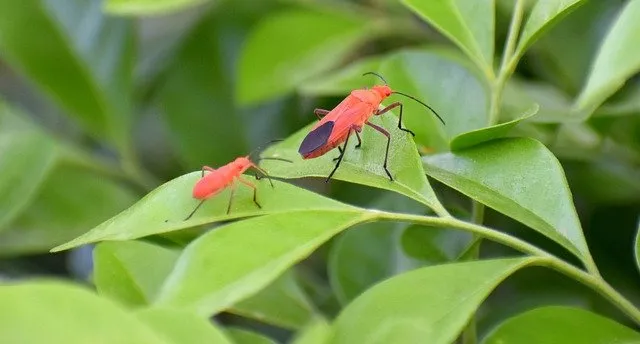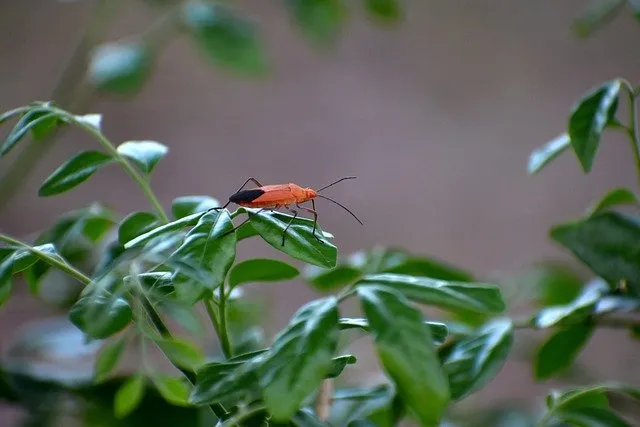As an Amazon Associate I earn from qualifying purchases.
Curious minds often ponder the intricacies of nature, and for those intrigued by the world of insects, the boxelder bug stands out with its distinctive appearance and behaviors. Suppose you wonder, “What do boxelder bugs eat?” you’ve come to the right place. In this comprehensive exploration, we will delve into these fascinating insects’ dietary habits, uncovering the foods that fuel their daily lives. From the staple diet of boxelder seeds to their unexpected culinary choices, join us on a journey to understand the gastronomic preferences of boxelder bugs and gain insights into their ecological role in their respective habitats.
What Do Boxelder Bugs Eat?
Boxelder bugs, distinctive insects with their striking red and black coloration, are common in many regions. While their appearance is unmistakable, have you ever wondered what fuels these bugs? In this article, we’ll delve into the culinary preferences of boxelder bugs, exploring the diverse array of foods that make up their diet.
1. Boxelder Seeds:
Boxelder bugs are named after their primary food source: boxelder seeds. These bugs have a particular affinity for the seeds produced by boxelder trees (Acer negundo). The seeds are abundant and provide essential nutrients, making them a crucial component of the boxelder bug diet.
2. Other Maple Tree Seeds:
While boxelder seeds are a favorite, boxelder bugs are not picky eaters; they also consume seeds from other maple trees, such as the silver maple (Acer saccharinum) and the Manitoba maple (Acer negundo). This adaptability allows boxelder bugs to thrive in various environments where different maple species grow.
3. Fruit Feasting:
Boxelder bugs broaden their diet by indulging in various fruits. They feed on soft, fleshy fruits, including apples, cherries, and plums. The sugars and nutrients in these fruits contribute to boxelder bug populations’ overall health and vitality.
4. Floral Fare:
Boxelder bugs are attracted to the nectar produced by flowers, seeds, and fruits. While they may not be traditional pollinators like bees, their occasional visits to flowers affect their nutritional intake. The nectar serves as a source of carbohydrates, complementing the protein-rich seeds and fruits in their diet.
5. Survival Strategies:
Boxelder bugs showcase remarkable adaptability when it comes to their diet. In times of scarcity, they may feed on twigs, leaves, and even the tender bark of young trees. This ability to shift their diet based on resource availability highlights their resilience in various environments.
6. Water Requirements:
Like all living organisms, boxelder bugs require water for survival. They obtain water from the plant material they consume, which aids in digestion and maintains their overall hydration. While they can extract moisture from their food, boxelder bugs are also known to seek water sources such as puddles or damp soil.
What Eats Boxelder Bugs?
While boxelder bugs may have a unique appearance and specific dietary preferences, they are not exempt from the circle of life in the natural world. Like any other species, boxelder bugs have their share of predators that play a crucial role in maintaining ecological balance. In this exploration, we’ll take a closer look at the diverse array of creatures that consider boxelder bugs a part of their menu, shedding light on the predator-prey dynamics in the intricate tapestry of nature.
1. Birds:
One of the primary predators of boxelder bugs is the avian community. Birds such as sparrows, robins, and starlings are known to feast on these insects. With their agile flight and keen eyesight, birds skillfully snatch boxelder bugs from leaves, branches, and other surfaces, contributing to effective pest control in various ecosystems.
2. Insectivorous Insects:
Within the insect world, some specialized predators target boxelder bugs. Ladybugs, lacewings, and predatory beetles are notable examples. These insectivores are equipped with adaptations such as specialized mouthparts and voracious appetites, making them effective hunters of boxelder bugs and other small insects.
3. Spiders:
With their intricate webs and stealthy hunting techniques, spiders also help control boxelder bug populations. Orb-weaving and jumping spiders are particularly adept at capturing boxelder bugs that unwittingly venture into their silk traps or come within striking distance.
4. Amphibians and Reptiles:
Frogs, toads, and some lizard species prey on boxelder bugs naturally. These ground-level predators use stealth, a sticky tongue (in the case of amphibians), or swift strikes (in the case of certain reptiles) to catch boxelder bugs as they traverse the vegetation.
5. Small Mammals:
Some small mammals, including shrews and bats, are known to include boxelder bugs in their diet. Bats, in particular, play a crucial role in controlling insect populations, including boxelder bugs, as they take to the night sky in pursuit of their nightly meals.
How Do Boxelder Bugs Impact Our Ecosystem?
Boxelder bugs, with their distinctive appearance and feeding habits, play a nuanced role in the ecosystems they inhabit. While they are not harmful to humans, their presence can directly and indirectly impact the environment. In this exploration, we will examine how boxelder bugs influence our ecosystems, examining their ecological footprint and the ripple effects on flora, fauna, and overall biodiversity.
1. Feeding Habits and Plant Interactions:
Boxelder bugs primarily feed on the seeds of boxelder trees and other related species, influencing the reproductive cycle of these plants. While their consumption of seeds might not severely harm mature trees, it can affect the regeneration of young saplings. This interaction can, in turn, alter the composition and density of plant populations, with potential consequences for other organisms that rely on these plants for food or habitat.
2. Impact on Agricultural Crops:
While boxelder bugs are not typically considered agricultural pests, their tendency to feed on various fruits, including apples and cherries, may have economic consequences for fruit farmers. In large numbers, boxelder bugs can cause damage to crops, affecting both the yield and quality of produce. Integrated pest management strategies are often employed to mitigate these impacts and maintain the delicate balance between agricultural practices and natural ecosystems.
3. Predator-Prey Dynamics:
Boxelder bugs contribute to the intricate web of predator-prey dynamics in ecosystems as a food source for various predators. Birds, spiders, insects, and small mammals that feed on boxelder bugs are crucial in controlling their populations. This natural regulation prevents unchecked population growth, ensuring that boxelder bugs do not become overly abundant and disrupt the balance of the ecosystem.
4. Decomposition and Nutrient Cycling:
In their natural life cycle, boxelder bugs eventually die and become part of the decomposition process. Microorganisms, fungi, and other decomposers break down their bodies, releasing nutrients into the soil. This contribution to nutrient cycling is a vital component of ecosystem health, as it enriches the soil and supports the growth of plants in the surrounding environment.
5. Human-Boxelder Bug Interactions:
While boxelder bugs do not directly threaten humans, their large aggregations seeking shelter in and around human structures can occasionally disturb people. This behavior prompts homeowners to seek control measures, often using chemical pesticides. Understanding the ecological role of boxelder bugs can guide the development of more sustainable and targeted approaches to managing their populations, minimizing the environmental impact of control measures.
Final Words
In unraveling the multifaceted impact of boxelder bugs on our ecosystems, it becomes evident that these seemingly small insects play a significant role in the intricate dance of nature. From their interactions with plant species, both as consumers and contributors to nutrient cycling, to their role in predator-prey dynamics, boxelder bugs are integral to maintaining the delicate balance of our ecosystems. As we ponder the question, “How do boxelder bugs impact our ecosystem?” we find that their influence extends beyond mere nuisance to embody a crucial link in the ecological chain. Recognizing and appreciating the interconnected relationships between boxelder bugs and the broader environment allows us to approach pest management holistically, fostering a sustainable coexistence between humans and the natural world.
You can also read:
1.What Do African Gray Parrots Eat? From Beak to Bowl
2.What Do Possums Eat? Nutritional Insights
3.What Do Great Pyrenees Eat? A Nutritional Guide
4.What Do Dalmatians Eat? Fueling Your Dalmatian’s Fire
Amazon and the Amazon logo are trademarks of Amazon.com, Inc, or its affiliates.



